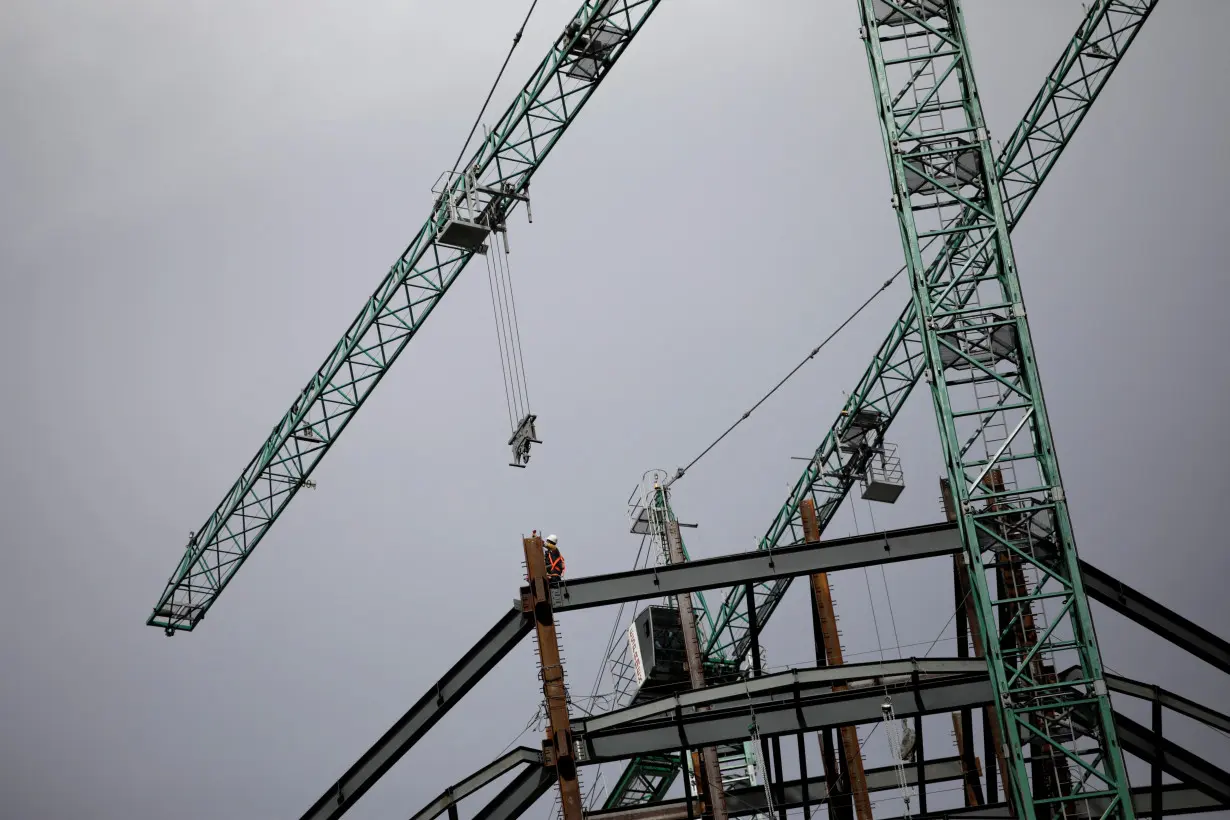By Noe Torres
MEXICO CITY (Reuters) - Mexican businesses, particularly those linked to real estate and construction, are counting on investment from so-called "nearshoring" to boost profits and economic growth, especially in industrial zones near the U.S. border.
Mexico's government expects nearshoring - the trend of locating manufacturing capacity in Mexico, closer to the U.S. market, rather than in Asia - to add up to 1.2 percentage points to growth, which is expected to reach 3.5% this year.
Even as analysts warn that gang violence, plus water and energy supply snags could curb the trend, many local and foreign businesses are looking to capitalize on shifts in production chains, some of which have already begun.
"Many companies are already talking about this - about nearshoring and the economic benefits," said Gerardo Copca, an analyst at consultancy MetAnalisis. "And I do think this will take off." It will, however, take time, he cautioned.
Nearshoring was on the lips of many executives during third quarter earnings calls, and in the first six months of 2023, Mexico raked in around $29 billion in foreign direct investment, up 5.6% from 2022. More than half was in the industrial sector.
One notable project - electric vehicle maker Tesla's plans for a reported $5 billion factory in northern Mexico - has been credited with attracting $1 billion in Chinese investments to nearby industries.
Mexican gross fixed investment is on track to post its strongest annual growth since 1997, leaping 31.5% year-on-year in seasonally adjusted terms in August, the latest data.
Mexican real estate investment trust Fibra Uno plans to launch a trust allowing investors to cash in on expected growth of industrial assets.
Fibra Uno expects Mexico's nearshoring momentum to continue for the next 15 years, CEO Andre El-Mann said on Oct. 24.
ENERGY WORRIES
Meanwhile, estimated manufacturing property demand for 2023/24 stands at 2.5 million square meters, up nearly 80% from last year, according to industrial parks association AMPIP.
Demand was particularly strong in the auto sector, the electronics industry and among machinery makers, AMPIP said.
Lorenzo Berho, head of construction firm Vesta, said not only should the north benefit from nearshoring, but also the central carmaking region known as El Bajio, a "very good location" for multinationals, with strong infrastructure in states including Queretaro, Guanajuato and Jalisco.
"It has a great labor pool. It has good logistics," Berho told an analysts' call last month.
Enrique Navarro, finance chief at Banco Regional, observed that relocation activity should fuel "a lot of growth" in northern, western and central Mexico.
As it seeks to lure manufacturing capacity away from Asia, Mexico can take advantage of its shared border with the United States, the world's largest economy, and multiple trade pacts, including USMCA, which includes Canada.
Mexico's lower labor costs are also a big draw, as are growing economic tensions between the U.S. and China.
But challenges remain because President Andres Manuel Lopez Obrador's drive to tighten state control of energy has fed concerns about a lack of investment in key infrastructure.
"The investments the country is receiving are already creating bottlenecks due to the instability of electricity transmission, water scarcity and limited industrial space," Swiss bank UBS said in a recent note.
Still, nearshoring is showing up in the real economy.
Cement company GCC said between July and September, greater demand for cement was driven by construction of industrial projects in Chihuahua state, which borders Texas.
Total Mexican construction output jumped almost by 46% in August year-on-year, with northern states performing strongly.
(Reporting by Noe Torres; Additional reporting by Dave Graham; Editing by David Alire Garcia, Christian Plumb and Josie Kao)

 Judge set to rule on whether to scrap Trump's conviction in hush money case
Judge set to rule on whether to scrap Trump's conviction in hush money case
 Why AP called the Arizona Senate race for Ruben Gallego
Why AP called the Arizona Senate race for Ruben Gallego
 Pentagon secrets leaker Jack Teixeira set to be sentenced, could get up to 17 years in prison
Pentagon secrets leaker Jack Teixeira set to be sentenced, could get up to 17 years in prison
 World leaders descend on Azerbaijan's capital Baku for United Nations climate talks
World leaders descend on Azerbaijan's capital Baku for United Nations climate talks
 Azerbaijan accused of ramping up repression of critics ahead of hosting UN climate summit
Azerbaijan accused of ramping up repression of critics ahead of hosting UN climate summit
 Research reveals China has built prototype nuclear reactor to power aircraft carrier
Research reveals China has built prototype nuclear reactor to power aircraft carrier
 Stock market today: Asian shares mostly decline, shrugging off Wall Street's overnight rally
Stock market today: Asian shares mostly decline, shrugging off Wall Street's overnight rally
 IMF reaches staff agreement with Zambia for $185.5 million disbursement
IMF reaches staff agreement with Zambia for $185.5 million disbursement
 Spurs center Victory Wembanyama joins elite company through 82 career NBA games
Spurs center Victory Wembanyama joins elite company through 82 career NBA games
 Joel Embiid is expected to make his season debut for the 76ers after injuries and suspension
Joel Embiid is expected to make his season debut for the 76ers after injuries and suspension
 Mitchell scores 36 as the Cavs beat the Bulls 119-113 for 12th straight win
Mitchell scores 36 as the Cavs beat the Bulls 119-113 for 12th straight win

